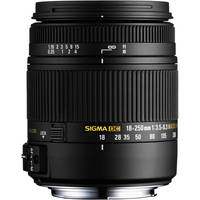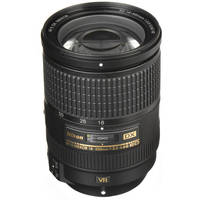
Canon 18-200mm IS? Nikon 18-300mm VR? Tamron 18-270mm VC? Sigma 18-250mm OS Macro?
It might be hard to keep up with all the options if you’re in the market for a superzoom lens. So here’s a basic rundown of the latest and greatest the market has to offer, showcasing the strengths and weaknesses of each option. If you have any personal experience with any of these, please share in the comments section.
Canon 18-200mm IS

Canon EF-S 18-200mm f/3.5-5.6 IS
Canon was a bit late to the superzoom game, but they came with a bang – beating pretty much all of the competition in image quality, especially at the long end. You’ll get maximum sharpness at 200mm with this bad boy. On the flip side, you’ll also get barrel distortion as bad as it gets at the wide end. I’m not too picky about that, as it can easily be corrected in post. I used this lens exclusively in the studio for about a year before selling it off. One thing I didn’t like about it was the zoom creep, which I never experience with my Sigma, for example. It also felt cheaper than the others, with a higher price tag to boot. But if premium image quality is your thing (for a superzoom) then this is your best bet.
Sigma 18-250 OS Macro

Sigma 18-250mm f/3.5-6.3 DC Macro OS HSM
After using the original Sigma 18-200 OS for nearly 5 years, I’ve become a fan of its handling and durability. I’ve put this lens through its paces, dropped it numerous times, and it just continues churning out good images, despite having a UV filter that is permanently attached. Knowing Sigma, this new lens should be no different. The test reveal that it has vastly improved performance at telephoto though not quite up to par with the Canon. It’s also smaller and lighter than previous versions, welcome to anyone who appreciates less heft. However, you get extremely bad pincushion distortion in the middle of the range, especially bad at 35mm, so that’s one strike against it. On the other side, it’s sharper at the wide end than any other lens out there. Oh yeah, and it can focus closer than all the others too! Not much to dislike about this lens, especially for the price.
Tamron 18-270 VC

Tamron AF 18-270mm Di II VC PZD
The precursor to the aforementioned Sigma, Tamron is always pushing the limits in lens design. Previously the longest of the bunch (before the Nikon came out) – this one packs an extremely long zoom into a small and light package, like the Sigma. But it’s image quality does not quite hold up to the others, and autofocus is a bit fickle. Furthermore, it’s zoom action is uneven, it exhibits lens creep when not locked, and build quality is not up to par with its competitors. We’re not quite sure why you’d get this one over any of the competition, especially considering is pricing (the Sigma is cheaper), so best skip this one over.
Nikon 18-300 VR

AF-S Nikkor DX 18-300 f/3.5-5.6G ED VR
Nikon had to one up Tamron and go an extra 30mm for title of the longest superzoom ever – a ridiculous 16.7x zoom. Image quality is actually good in the wide to normal range, but as expected, it performs very poorly at telephoto. On the plus side, it features decent build quality, and has the ability to focus rather closely despite not being a macro, and has fast and quiet autofocus abilities. However, it’s rather large and heavy, exhibits extreme distortion across the range (as most of these do), and its’ image stabilization is not so effective at telephoto. If you absolutely must have Nikkor optics, get this lens and enjoy it, but do consider the competition.


















